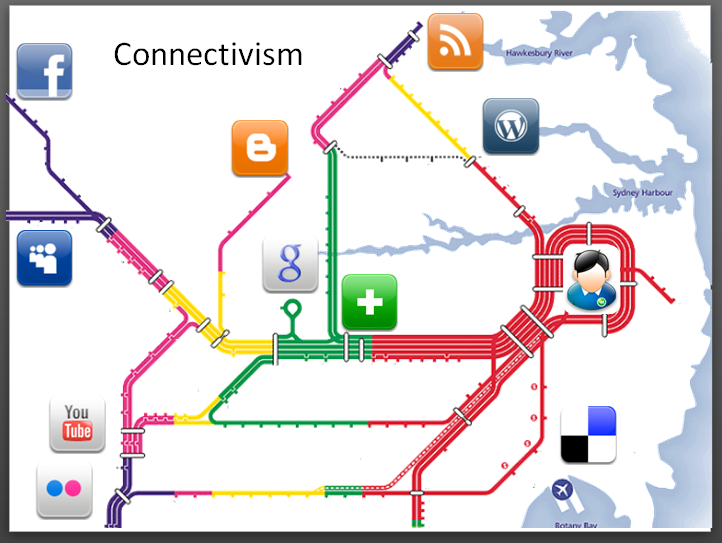All the four learning theories that we are using for imparting knowledge to the students have their own importance for different situations. However, the two learning theories that “speak” to me the most as a learner and educator are constructivism and connectivism which assist students to become creative, critical thinkers, and independent learners.
Constructivism learning theory based on the belief that knowledge isn’t a thing that can be simply given by the teacher in the classroom. Rather, it is constructed by students by an active, mental process of development. Learners are the active participants who construct their own understanding and knowledge of the world through experiencing things and reflecting on those experiences. The educators engage the students by asking questions, evoking discussions, and reflective responses. This theory inculcates the skills of the problem- solving and decision making in students.
Connectivism learning theory is based on the belief that knowledge exists everywhere and is accessed and organized by learners by creating connections and developing a network. This theory explains new opportunities for people given by Internet technologies such as Web browsers, email, wikis, online discussion forums, social networks, YouTube, and many more to learn and share knowledge beyond the World Wide Web and among themselves. In connectivist learning, a teacher encourages students to find out information on their own online, validate that knowledge, and express what they find with their peers to help them learn collaboratively.
In my home country, the teaching is more teacher-centered. Students are considered as empty vessels. I never used any of these theories as a part of my teaching because I was unaware of them. But, here in Canada, I am learning new methods of teaching which help students become more independent and confident learners. We are living in a technological and globalized world. We have students from diverse backgrounds. As an educator, I will try my best to make my classroom interactive, inclusive, and connected and will use different techniques based on the learning needs of my audience and taking into consideration the various factors like culture, skills, interests, and many more.
As a learner in TRU, I am using many applications such as Kahoot, Menti, YouTube, Loom, Zoom, Google Docs, Padlat, and Splot writer for learning new things. As an educator, I will use Kahoot, menti for making the classroom teaching more interesting. I will use Spiral, Splot writer, and Padlet for group discussions which will help them to give their own opinion and learn from their peers and build a sense of connections. I will use Loom for presenting the basic topics in front of the class and Zoom for creating a space to solve students’ problems virtually and providing them a space to connect their peers helping them creating social connections.
References:
Bates, T. (2019). Teaching in a Digital Age -2.2 Epistemology and theories of learning. (2nd ed.). Retrieved from https://pressbooks.bccampus.ca/teachinginadigitalagev2/chapter/section-2-2-epistemology-and-why-its-important/


Hi Jaspreet,
I love how you divided all the different apps into different use categories in the final paragraph. Furthermore, just like you, I’m learning so many new teaching methods and theories here in Canada, and I apply them as I encounter in my classrooms. It is a very exciting experience as well to see that several of my practices and beliefs are fundamentally grounded in age-old theory!
Thank you for your post!
Ruhann
Thanks for your feedback. Being an M.ed. student, I am learning new concepts, theories, and technologies that are using nowadays in teaching students. It’s a great experience for all of us now as we are using alternative methods of teaching too due to COVID 19. Moreover, Joe is also doing his well for giving us the realtime experience by arranging the Guest lectures relevant to the field. I am really enjoying learning all this and will definitely implement all these skills for making my teaching knowledgable and interesting in the future.
Regards:
Jaspreet Kaur
Hi, Jaspreet
I totally agree with you Jaspreet, the learner is actively involved with the teacher, and learning is a joint venture with the teacher.
The teacher becomes the facilitator and the learners are encouraged to interact, exchange views and experience and construct meaning and knowledge that is based on their needs.
Here in Canada after using so many different applications, I think that really helps in nurturing and maintaining connections to facilitate continuous learning.
Thank you.